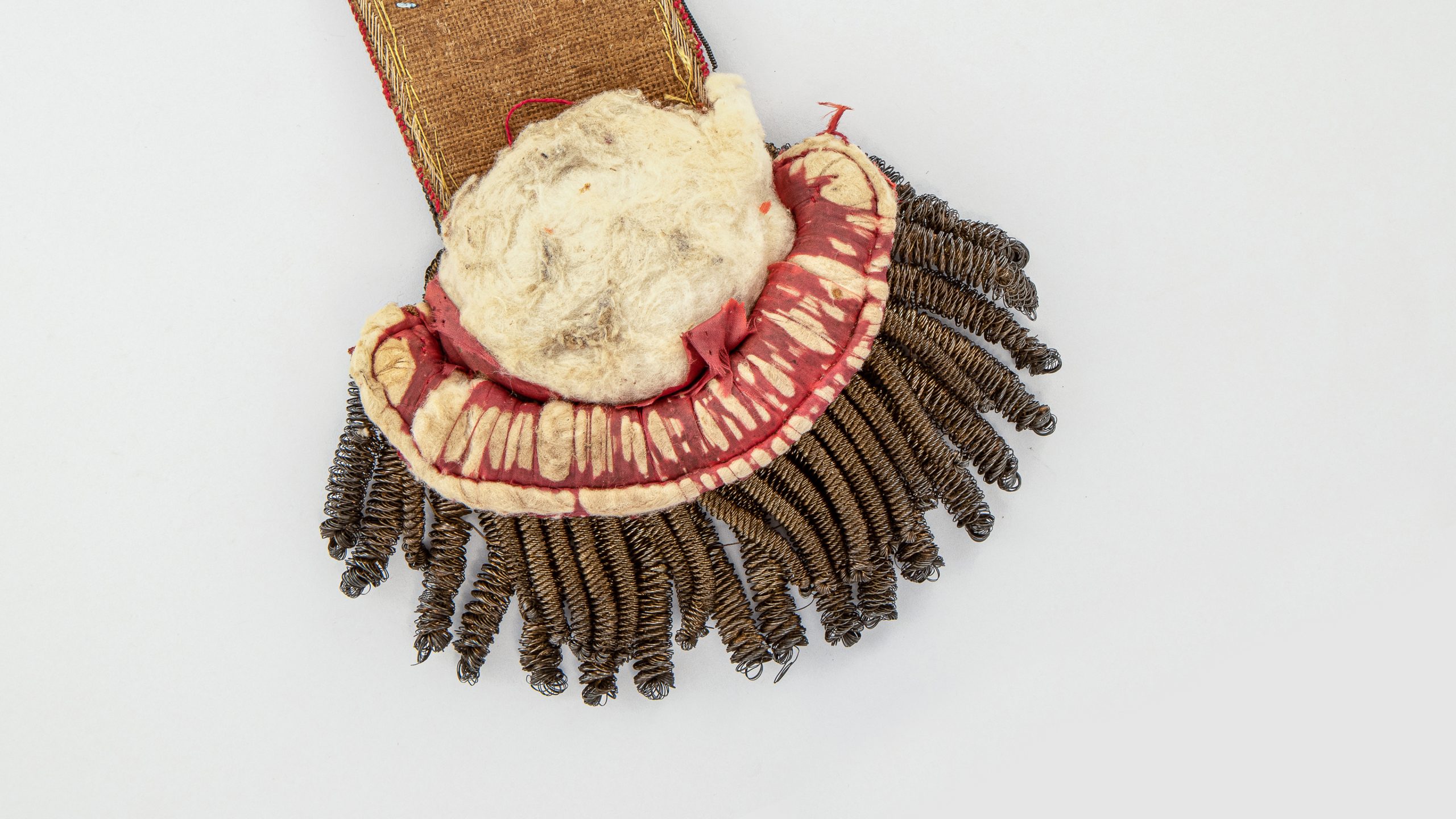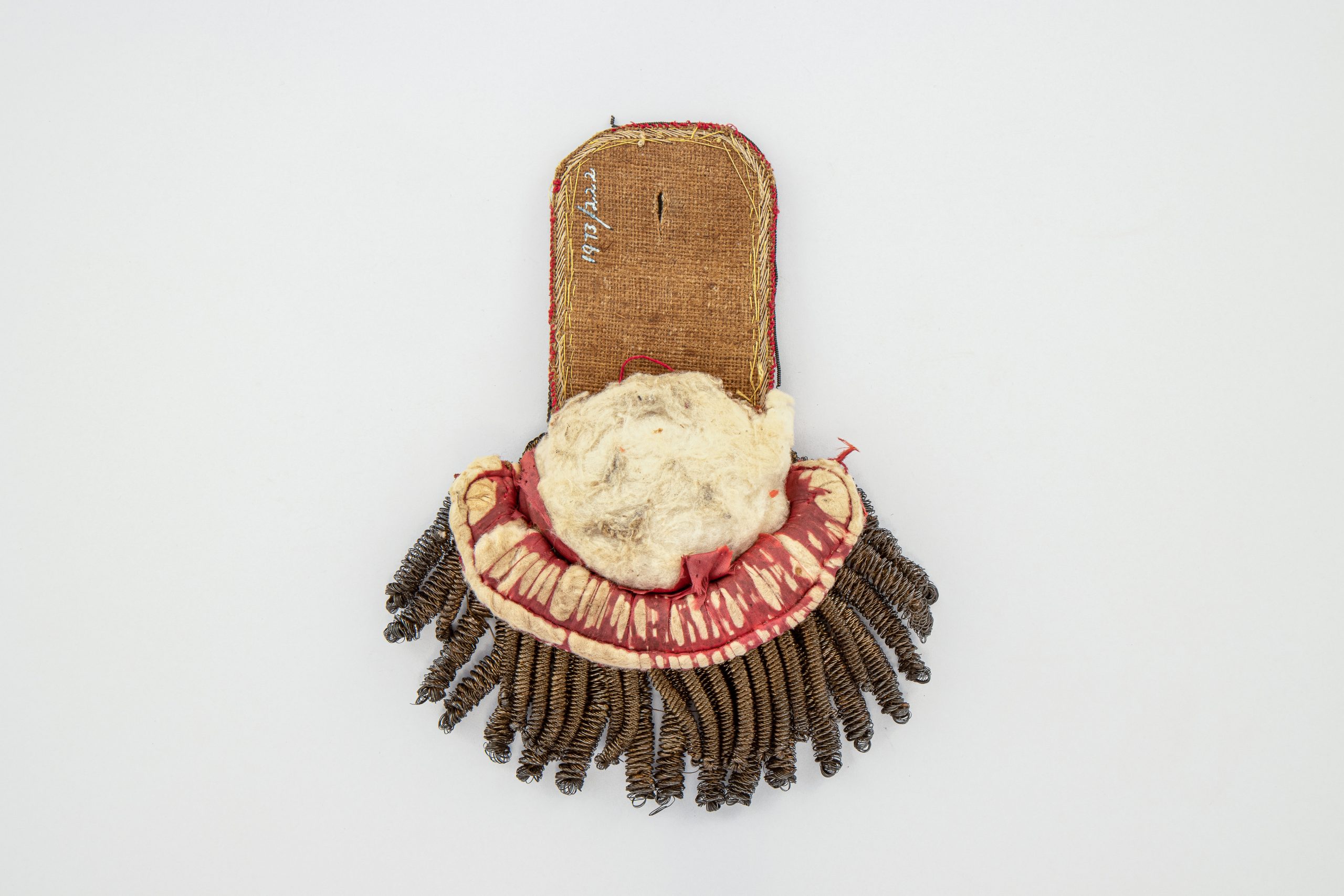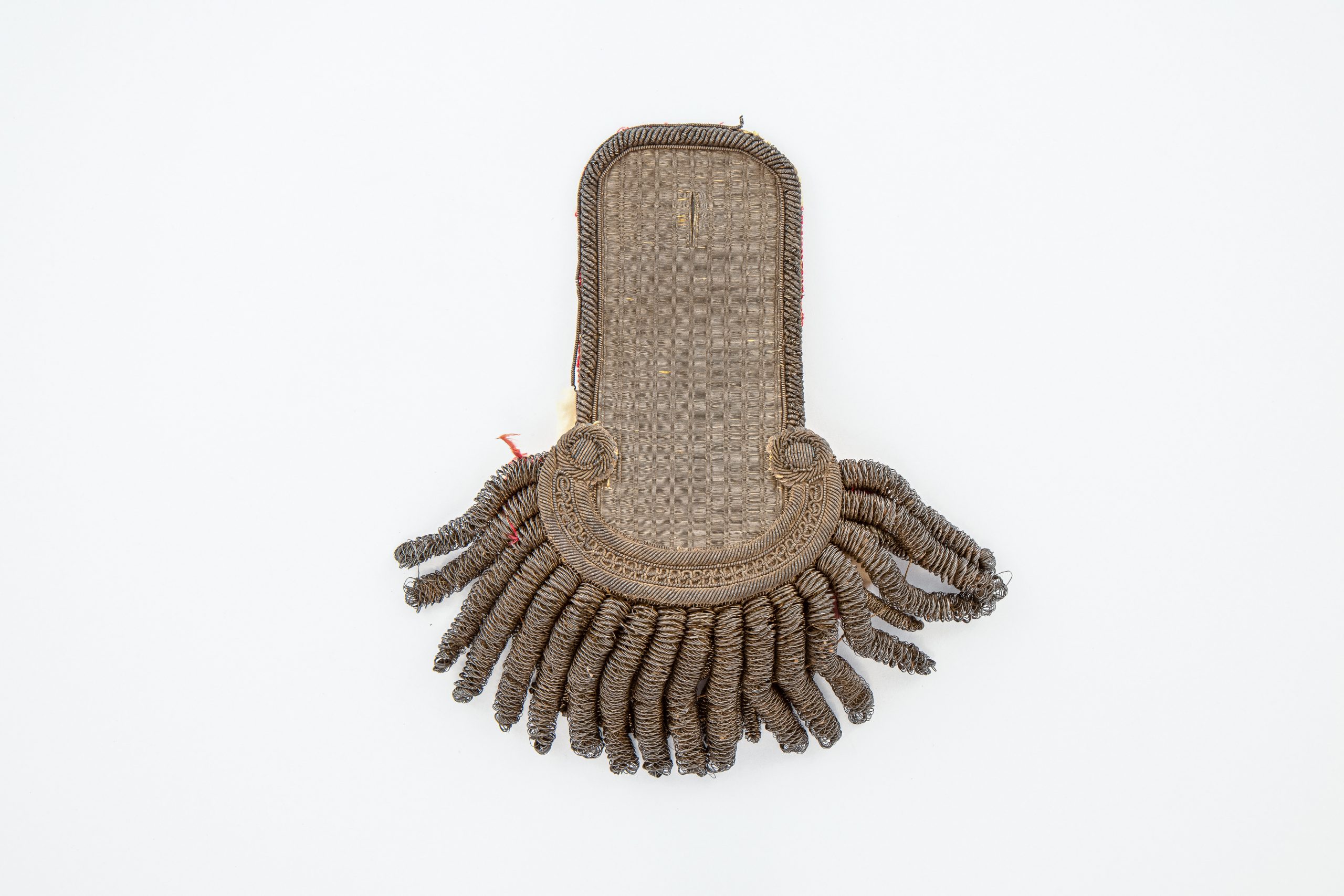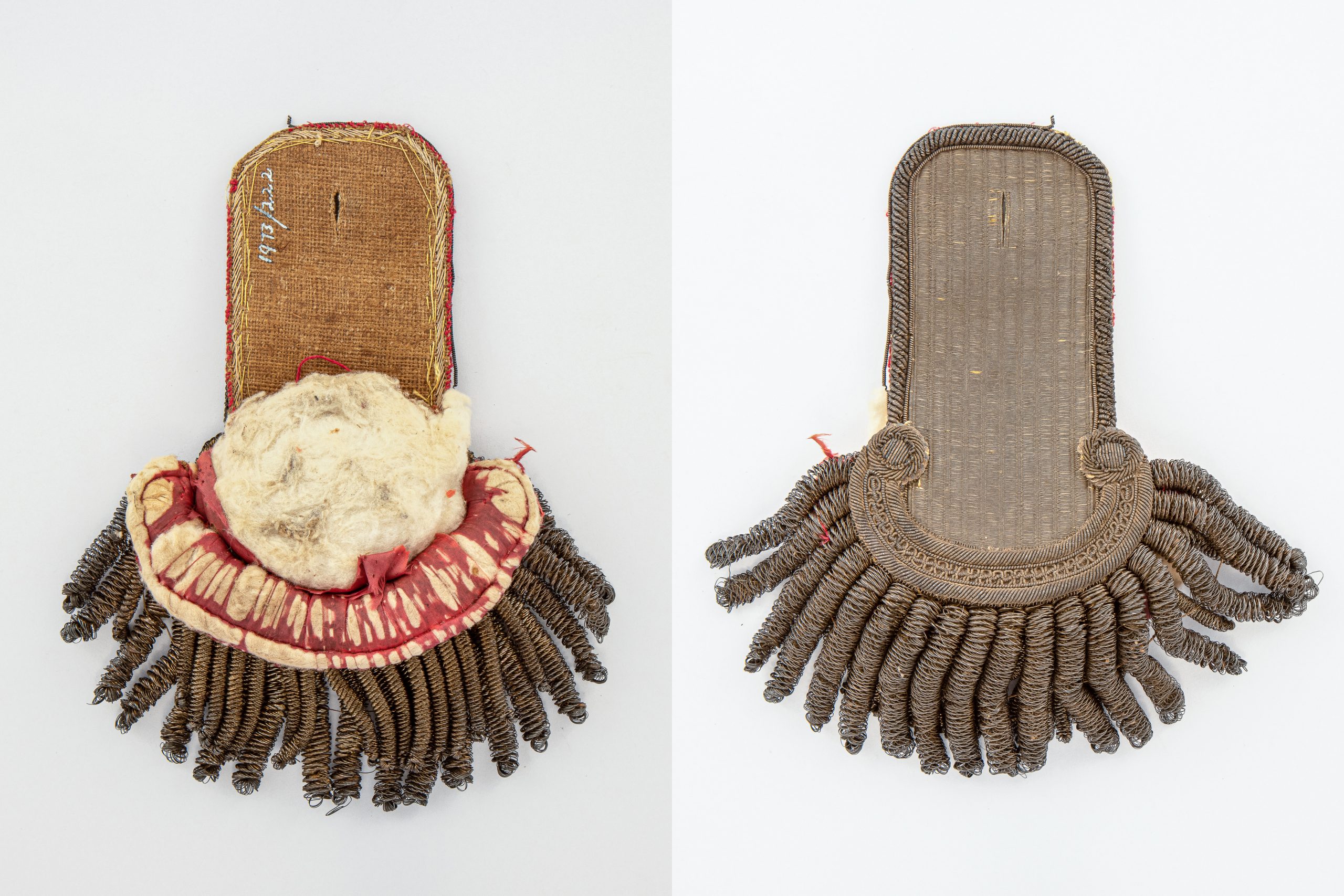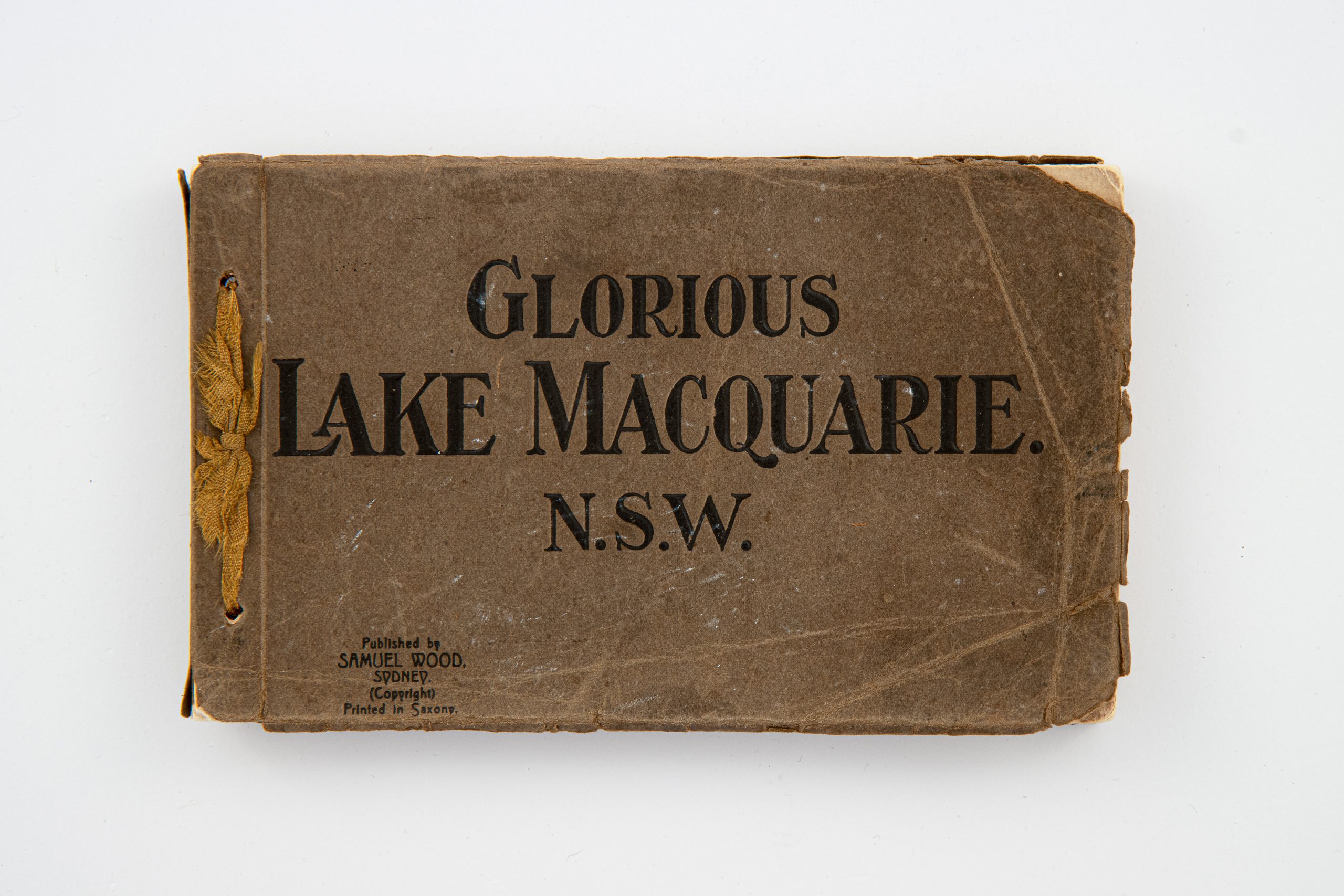Broad Shoulders
Lieutenant Jonathan Warner at Lake Macquarie
Standing on the deck of the Orpheus as it rounded into Port Jackson, Cambridge-born Lieutenant Jonathan Warner (1786-1843) first saw his exotic new posting. It was a Spring day in 1826, and as the Sydney weather was not yet too hot, he may have felt quite comfortable in the full military uniform he was wearing. This fancy epaulette sat on one of the shoulders of his coat, a reminder of his senior rank to the subordinate corporals and privates of the New South Wales Royal Veteran Battalion also on board the ship.
Warner’s wife Mary and their children might have found shipboard life difficult during the five month voyage, but Warner was no stranger to the sea – he had sailed with the Royal Navy and served with the British Army during the Napoleonic Wars (1803-15).
In the colony, Warner soon folded up his uniform and retired from the military. As Assistant Surveyor of Roads and Bridges, Warner supervised convict iron gangs to survey the Great North Road from the Hawkesbury to Maitland, through the newly named Lake Macquarie area, which the traditional owners, the Awabakal people, called awaba. But managing convicts was arduous and in 1829, Warner selected 1280 acres (518 hectares) of land near the lake. For his growing family, he built a timber house which he named Biddaba, the Awabakal word for ‘silent resting place’.
From his peaceful home (at what is now Warners Bay), Warner continued his civic career as magistrate for Brisbane Waters, risking resistance from bushrangers and the Awabakal by riding through the bush to attend hearings at the Gosford Court House.


